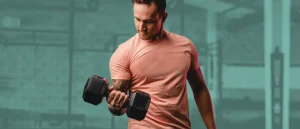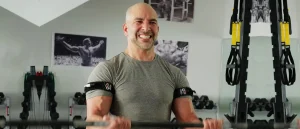You’re Doing Lateral Raises Wrong. Here’s What You’re Missing
Who doesn’t love a good shoulder pump? If you’re looking to grow your medial delts (the side of your shoulders) you better be smashing some lateral raises. They’re one of the best exercises for targeting the lateral head of the delts (1), and when done regularly they can help you build broader, stronger shoulders (2). But do lateral raises wrong, and you’re heading straight for shoulder injury.
In her latest post, certified personal trainer, Alexandra Redmond shares an easy fix to make your lateral raises more safe and effective. While they look pretty similar, small tweaks in form have a big impact on the load being placed on the rotator cuff and medial deltoid. Here’s everything you need to know to make the most of this exercise.
How to Fix Your Lateral Raise Form
As Redmond demonstrates, the main problem with lateral raises is most people think they’re supposed to keep their arms directly at their sides, moving through the frontal plane to form a “T” with their arms.
When you move the shoulder through the frontal plane, it places a lot of stress on the rotator cuff and labrum and is a shoulder impingement waiting to happen.
The fix? Instead of moving your arms straight out to your sides, bring them slightly in front of your body at approximately a 30 to 45 degree angle— also known as the scapular plane. According to Redmond, the scapular plane allows the shoulder blade to move more naturally against the load.
Shop Dumbbells
How to Do a Lateral Raise
How to do it? Redmond gives 4 tips to help you implement this technique.
Find the Scapular Plane
Your arms should be roughly 30 to 45 degrees in front of the shoulder to hit the scapular plane. Angling your dumbbells slightly forward before you initiate the lift can help remind you where they should be heading.
Slight Forward Lean
“Slightly tip forward from the waist to better line up with the side of your deltoid,” she says. Imagine you’re being karate chopped at the waist and hinge at the hips, keeping your spine neutral and core engaged. A slight bend at the knee can help achieve this position more naturally.
Lift Arms Out
Raise your arms up from there, either with arms slightly bent or straight. Giving a slight bend in the elbow can reduce tension in the vulnerable elbow joint, and won’t reduce the activation of the delts. As you lift your arms, think about bringing them out rather than straight up to mindfully activate the medial deltoid.
Keep it Light
When performing lateral raises, you don’t need a ton of weight. If you find you’re having to swing your body or shrug your shoulders to lift the weight up it’s probably too heavy, and you’re likely using your traps more than your medial deltoid.
References
1. Campos, Y. et al (2020) Different Shoulder Exercises Affect the Activation of Deltoid Portions in Resistance Trained Individuals. https://www.sciendo.com/article/10.2478/hukin-2020-0033
2. Coratella, G. et al (2020). An Electromyographic Analysis of Lateral Raise Variations and Frontal Raise in Competitive Bodybuilders. https://www.mdpi.com/1660-4601/17/17/6015










